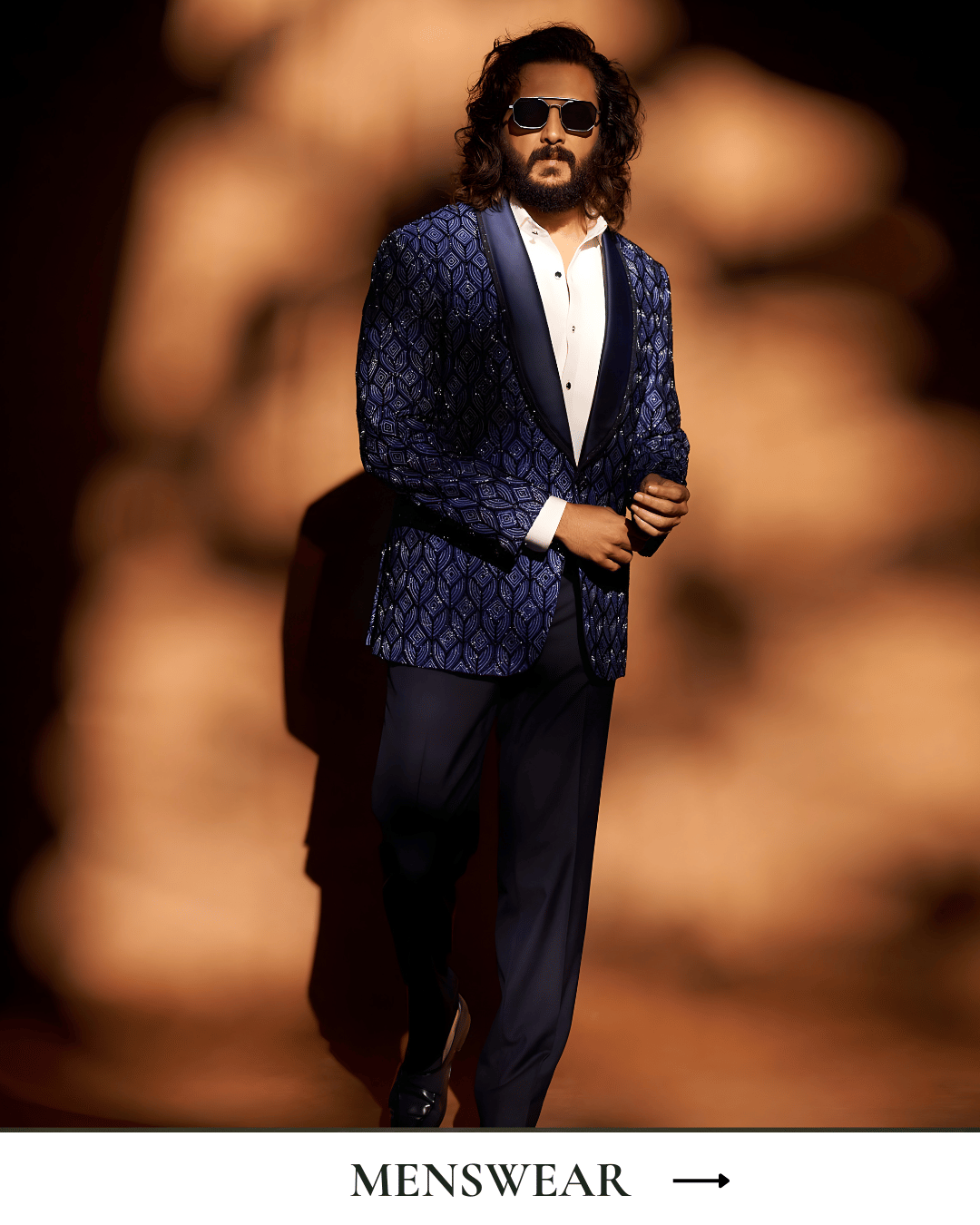Challenging the Digital Definition of Excellence
In an era obsessed with data, automation, and algorithmic perfection, the luxury industry is being pressured to conform. Technology promises a future where garments are cut flawlessly, seams are mathematically precise, and errors are eliminated. The digital narrative suggests that the perfect stitch is the one created by a machine.
But at Achin Bindlish, we challenge this premise. We believe that chasing algorithmic flawlessness risks sacrificing the soul of the stitch. For centuries, true luxury has been defined not by sterile perfection, but by the subtle, beautiful variations left by the human hand.
This is the core difference between excellence and essence. We explore why embracing the imperfection of human craft is the most critical strategy for preserving and elevating luxury in the digital age.
The Machine's Precision vs. The Artisan's Nuance
The debate often frames automation and human craft as mutually exclusive competitors. This is a false dichotomy. They simply define precision differently.
A. The Precision of Algorithm: Consistency
A robotic arm or an advanced sewing machine is programmed for consistency. It can produce a stitch of $3.0\text{mm}$ length every single time. This is invaluable for structural integrity, bulk production, and repeatable processes.
B. The Precision of Intuition: Adaptation
The master artisan, however, doesn't aim for rote repetition. Their precision is defined by adaptation. When hand-stitching a complex curve or an irregular material like a textured brocade or delicate leather, the artisan's hand feels the tension, adjusts the angle, and modifies the stitch length by fractions of a millimeter to accommodate the unique qualities of the material. This creates:
-
Optimal Drape: The small, beautiful variations allow the fabric to fall naturally, giving the garment life.
-
Security: In techniques like the hand-done saddle stitch, the slight angle ensures the thread locks more securely than a machine’s straight lockstitch.
-
Narrative: Every stitch contains the story of the artisan's training, focus, and dedication.
The slight, human irregularity is not a flaw; it is the signature of authenticity.
The Three Assets Lost in Algorithmic Perfection
When a luxury brand allows its craft to be entirely homogenized by automation, it sacrifices three fundamental assets that clients pay a premium for:
1. The Haptic Connection
Luxury is fundamentally tactile. It is the "hand" of the fabric, the weight of the garment, and the feel of the lining. An entirely machine-made garment, no matter how precise, often lacks the organic, haptic richness that comes from fabric being manipulated and coerced by human hands. This subtle manipulation is what makes a piece feel alive.
2. The Cultural Provenance (The 'Why')
Couture techniques-from French seams to specific embroidery patterns-are often generational, rooted in specific cultures, regions, and historical practices.
When AI replicates a technique, it replicates the how, but it eliminates the why. The subtle differences in a hand-done stitch are the physical link to provenance and heritage. This is the narrative depth that differentiates a luxury item from a high-quality product.
3. The Irreplaceable Value of Effort
In a world where speed is common, effort is the ultimate luxury. When a client knows their garment represents 300 hours of specialized human labor-labor that required decision-making and manual skill-it fundamentally alters their valuation of the piece.
An item is valued higher when its creation is perceived as a human achievement, not merely a technological output.
Achieving the 'Hybrid Excellence' Model
The future of luxury is not a war between man and machine; it is a strategic partnership. At Achin Bindlish, we integrate digital technology not to replace human skill, but to elevate and preserve it.
-
AI for Optimization: We use computational tools for pattern nesting and structural cutting, minimizing material waste and achieving foundational uniformity. This ensures efficiency.
-
Human Skill for Essence: The master artisan is then freed to focus their invaluable time on the non-negotiable stages: the final hand-stitching, the delicate placement of embellishments, the personal fitting adjustments, and the precise manipulation of the final drape.
This Hybrid Atelier model leverages machine precision where it ensures efficiency, but insists on human imperfection where it delivers soul.
Conclusion: Investing in Legacy
The myth of the perfect stitch suggests that the goal of luxury is the absence of error. The reality is that the goal is the presence of soul.
The enduring value of couture lies in the story, the dedication, and the small, beautiful imperfections that confirm its human origin. As digital processes become the standard, the human signature will become the ultimate marker of exclusivity and true, lasting luxury.
The greatest investment any luxury brand can make today is in the preservation and celebration of the imperfect, masterful hand.




0 comments